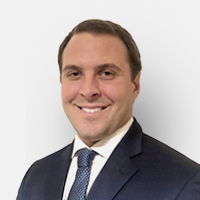Tag Archives: low volatility
The S&P 500 Low Volatility Index: Currently Valued at the 99th Percentile of Cheapness Relative to the S&P 500
Investor enthusiasm for AI and mega-cap technology stocks has propelled the S&P 500® to a gain of more than 30% over the past 12 months. As the S&P 500 has been reaching new highs on a regular basis, it is understandable if low volatility stocks have not been at the top of investors’ minds. This…
- Categories Factors
- Other Tags
- Categories
- Factors
- Other Tags
The February 2024 Rebalance of the S&P 500 Low Volatility Index
Since the previous rebalance for the S&P 500® Low Volatility Index on Nov. 17, 2023, and its most recent on Feb. 16, 2024, the S&P 500 delivered a stunning 11.3% return. During this period, the S&P 500 Low Volatility Index was up 5.3%, strong by historical standards, albeit underperforming the S&P 500. As has been the…
- Categories Factors
- Other Tags
- Categories
- Factors
- Other Tags
Financial Planning Using Indices: From Taxes to Factors
How are advisors putting SPIVA data and factors to work as they build long-term plans to help clients achieve objectives? Delta Wealth Advisors’ Dino Efthimiou and Niko Finnigan join S&P DJI’s Brent Kopp for a practical look at the importance of tax management and the role of indexing in building a comprehensive plan for clients….
- Categories Factors
- Other Tags
- Categories
- Factors
- Other Tags
The November 2023 Rebalance of the S&P 500 Low Volatility Index
The S&P 500® continued its strong performance this year after posting a 9.8% gain in a span of less than three weeks from Oct. 30 to Nov. 17, 2023. During this period, the 10-year U.S. Treasury yield dropped approximately 45 bps1 and October’s year-over-year headline CPI inflation cooled to 3.2%.2 As Exhibit 1 shows, since…
Investigating the Premium Available to Factor Returns via a Focus on Sustainability
Factor indices aim to provide investors the means to access factor exposure in a cost-effective and transparent way. S&P DJI offers sustainability versions of factor indices that incorporate environmental, social and governance (ESG) scores, which allow investors to align their investments with their interests while seeking to improve risk/return dynamics. Launched in 2021, our suite…
- Categories Factors
- Other Tags
S&P 500 Low Volatility Index August 2023 Rebalance
The S&P 500® performed well from the last rebalance for the S&P 500 Low Volatility Index on May 19, 2023, through the most recent rebalance on Aug. 18, 2023. As Exhibit 1 shows, the S&P 500 was up 4.7% during this period versus a decline of 1.5% for the S&P 500 Low Volatility Index. This…
- Categories Factors
- Other Tags
- Categories
- Factors
- Other Tags
Comparing Defensive Factors in the Recent Market Environment
On Sept. 17, 2020, S&P DJI’s Indexology blog shared a post I wrote titled “Comparing Defensive Factors During the Last 3 Bear Markets.” This blog is a continuation of that study, examining the results of the same factors during the 18-month period around the 2022 market correction that led the S&P 500® officially into bear…
- Categories Factors
- Other Tags
Introducing the S&P SmallCap 600 QVML Top 90% Multi-Factor Index
For market participants seeking to measure small-cap, multi-factor equity premia with greater diversification and historically lower tracking error (TE), S&P DJI has recently launched the S&P SmallCap 600® Quality, Value, Momentum and Low Volatility (QVML) Top 90% Multi-Factor Index. In this blog, we will examine the index construction methodology, historic performance, sector composition and factor…
- Categories Factors
- Other Tags
S&P 500 Low Volatility Index May 2023 Rebalance
Since the last rebalance for the S&P 500® Low Volatility Index on Feb. 17, 2023, the S&P 500 finished up 3.2% despite briefly dropping in mid-March during the collapse of Silicon Valley Bank. Exhibit 1 shows that during this period, the S&P 500 Low Volatility Index underperformed the S&P 500 by 4.3%. This divergence is…
- Categories Factors
- Other Tags
- Categories
- Factors
- Other Tags
2023 Has Already Been Trepidatious
A sizzling start for Canadian equities in 2023 found itself fizzling as March began. Despite having a return of as much as 7% in late January/early February, through March 17, 2023, the S&P/TSX Composite Index was up 0.7% YTD. In line with historical trends, the S&P/TSX Composite Low Volatility Index underperformed, declining 0.1%. Volatility rose…














































